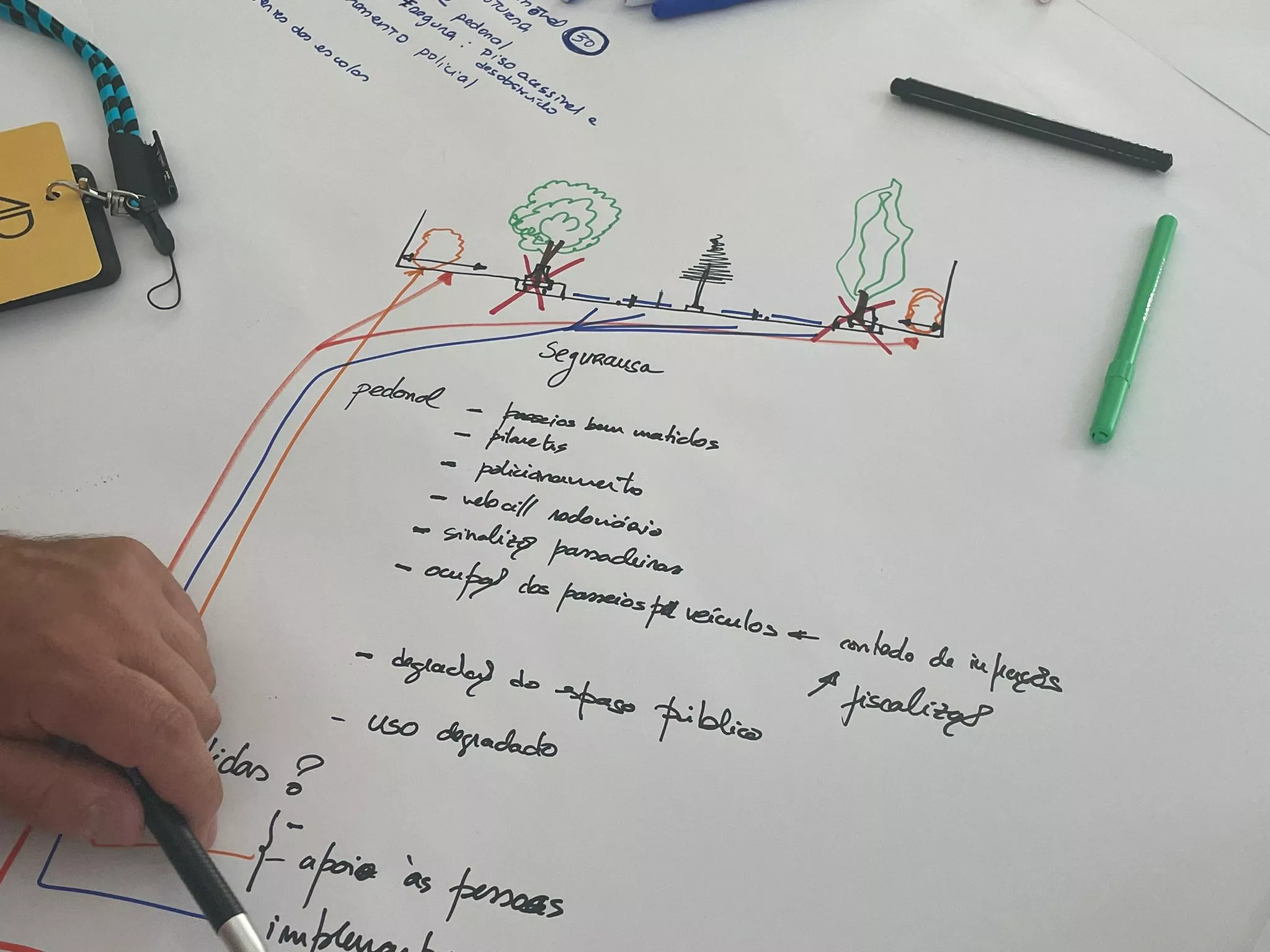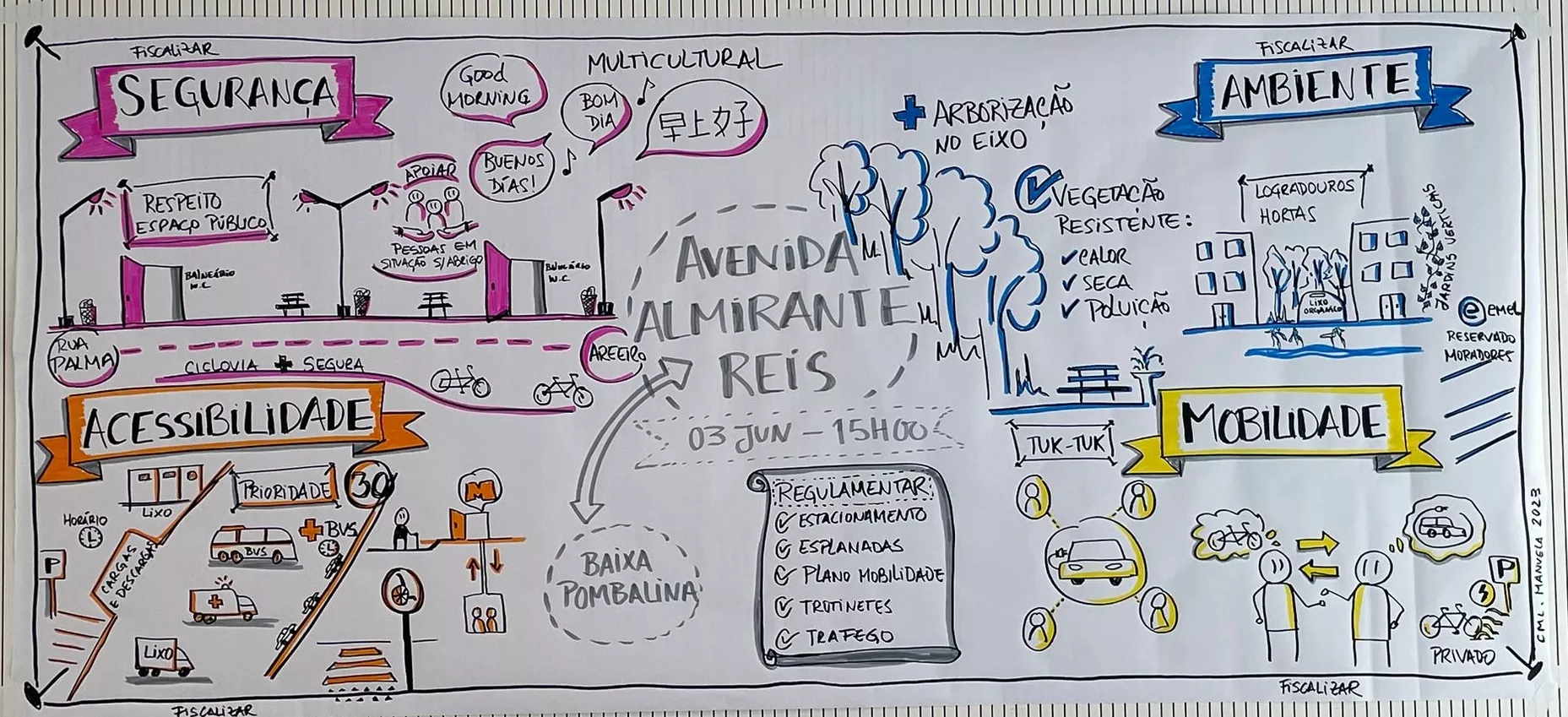How to run a World Cafe
The World Café, also known as the dialogue café, is a participatory practice that fosters creativity. It consists of a group dialogue process, in which participants are divided into tables and talk around four issues, in a total of four rounds, each lasting 20 minutes. At the end of each round, the five main ideas that emerged from the groups are collected. At the end of the four rounds, the ideas are organised into categories and subcategories, using graphic facilitation.
Câmara Municipal de Lisboa organised, this year, four world cafés to listen to a representative sample of the population that lives, works, learns, or uses the territory for recreational purposes. The theme of the world café was the requalification of Almirante Reis Avenue, in Lisbon, Portugal, on the Avenue's positive and bad elements, as well as what it proposes to improve its public space and experiences.

The four pillars of discussion were accessibility, security, the environment, and mobility. We promote reflective listening and non-judgmental assessment of everyone's contributions.
Three trigger questions were offered to generate dialogue amongst participants, which were arranged in four tables in a balanced manner. The following are the trigger questions:
1. How can we increase the Avenue's accessibility and pedestrian quality?
2. How can we improve the Avenue's environmental quality?
3. How can we combine the various modes of mobility on the Avenue while maintaining good articulation with the surrounding area?
4. How can we develop conditions that allow everyone in the Avenue to feel safe?
Given her experience and skills in these areas, a trainer from the Development and Training Department hosted the world cafés. It was accompanied by four facilitators, four copywriters, and one graphic facilitator, all of whom were city employees, who had previously been trained to play these roles.
Participants included representatives from local residents' associations, cultural associations, bicycle and environmental protection activists, parents, and teachers, among others. The outcomes of the world cafés were quite rich, allowing people to exchange and explore other points of view while also discovering something new.
At the end of each session, graphic panels were made to graphically organise the ideas and connections, acting as an excellent document to present the larger picture.





